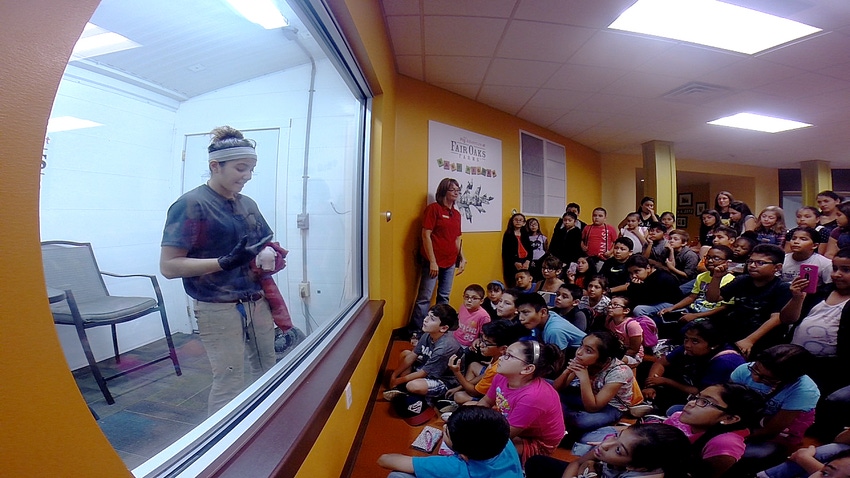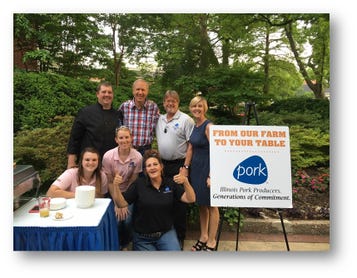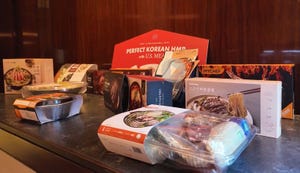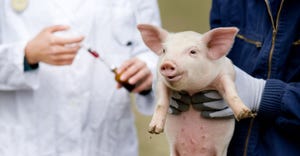Keeping it simple with consumers

Livestock in Illinois is a vibrant industry, gleams Illinois Pork Producers Association President, Bob Frase. Although the Land of Lincoln is often associated with corn and soybean production, Illinois’ 2,800 pig farmers know the state’s local resources, and convenient location to processing plants makes it a great place to raise pigs.
Similar to all American pig farmers, Illinois hog farmers work around the clock to produce nutritional, safe pork for consumers around the globe. While the size of the hog farms in Illinois varies, the high level of care for the pig and providing a quality protein does not. After all, doing what’s right in the barns is a shared value among pig farmers and consumers.
Many times over, Illinois pig farmers are reminded by their Chicagoan neighbors that the consumer wants to know how pork is brought to their tables. They are discussing activities on the farm and asking all farmers and ranchers to be more transparent.
“Connecting with consumers is not just about promoting pork but telling our story,” Frase says. “We need to tell the consumers who and what we are and why we are doing this.”
Communicating with the consumer can be simple. Frase points out; it is just about telling a straight forward account of raising pigs in the state. Illinois pork producers are taking every opportunity to do just that by telling their story and bonding over delicious pork — not just during Pork Month but all year long.
Conversations with consumers have resulted in a positive movement for the pork industry. Swine industry audits came about to prevent every entity in the pork supply chain — hog farmers to packers to food companies — from “taking a black eye to misconceptions,” notes Frase.
 As a result, Frase further explains, “They are asking us to verify what we are doing, and that is not unreasonable. Consumers need to have confidence in the food they buy and we need to back that up.”
As a result, Frase further explains, “They are asking us to verify what we are doing, and that is not unreasonable. Consumers need to have confidence in the food they buy and we need to back that up.”
Still, it does come down to who is actually the average pork consumer. Frase explains the majority of pork eaters quietly select the product based on price and quality.
Partnering with food retailers, such as Costco, HyVee and Sam’s Club, the organization can offer a chance to reintroduce pork to consumers. Personally, Frase enjoys the one-on-one dialogues stirred up on days the IPPA grills pork on-site at a food retailer. Handing out the samples and the recipes opens the door for consumers’ questions. Interestingly, the leading questions are about the different cuts of pork and the proper way to cook it. “The simple lonely pork burger is the most misunderstood cut of meat,” he jokes.
Often, pork is overdone, leaving a bad eating experience for the consumer. Properly cooking pork, including telling when it is done, is a common problem for consumers. Pork is lean and easy to overcook. Also, the old school rule was to cook it until the meat was no longer pink. However, the USDA recommends cooking pork to the internal temperature of 145 degrees F for medium-rare and up to 160 degrees F for medium doneness. This range of cooking will result in a flavorful, tender and juicy eating experience — an education lesson Frase enjoys teaching. “When you turn someone on to a good, juicy, and slightly pink pork chop then lights go on for them. “
Realizing properly cooking pork is a stumbling block, the IPPA is funding a grant for cooking classes in schools. The goal is to get pork into the schools and teaching the student the proper way to handle and cook pork.
Connecting the consumer with pig farming needs to start at an early age. That is why the IPPA teamed up with the Cook County Farm Bureau Foundation, Illinois Soybean Association Checkoff Program and the Illinois Corn Marketing Board to get kids back to the farm. This grant program offers Chicago fourth grade classrooms a no-cost trip to Fair Oaks Farm in Fair Oaks, Ind., allowing the students to experience both the Pig and Crop Adventure.
The first two tours were conducted on Sept. 23 and 30 with 300 students and teachers. It was an eye-opening experience for both students and teachers alike as, Diane Chathas, a teacher at Walker School in Bedford Park explains: “This was the best field trip we have ever been on. Especially for my students (who have never been exposed to farm life), the impact was incredible. The birth of the piglets was the most amazing experience for all of us.”
Each student walks away with a wealth of new information from learning what a pig eats, how sharp a piglet’s teeth can be, to how a farmer must shower before going into a barn to protect the pigs from disease. “It is a great opportunity for kids from Chicago to get out to the farm,” says Frase.
Even though there are anti-meat activists creating noise, Illinois pork producers will move forward openly showing and explaining how pork is brought to the market one consumer conversation at a time.
About the Author(s)
You May Also Like



